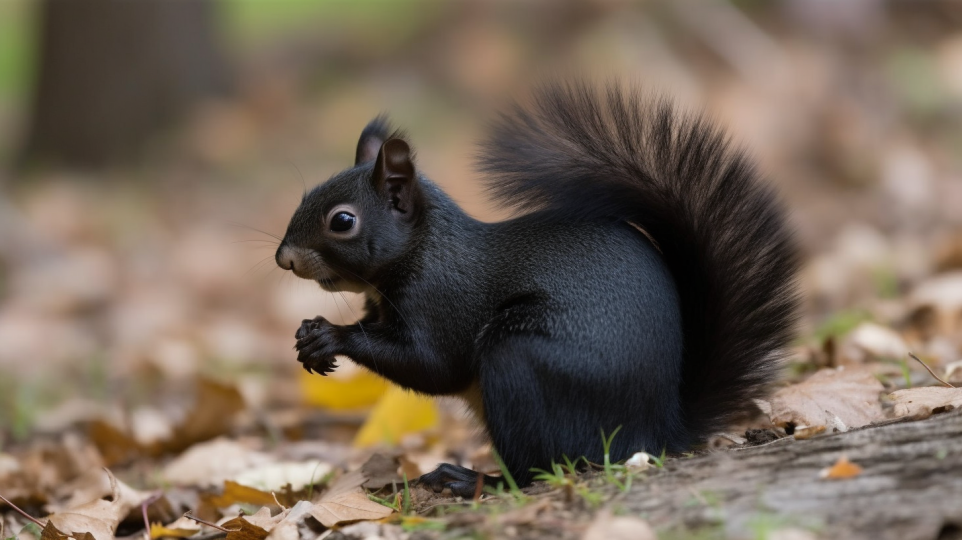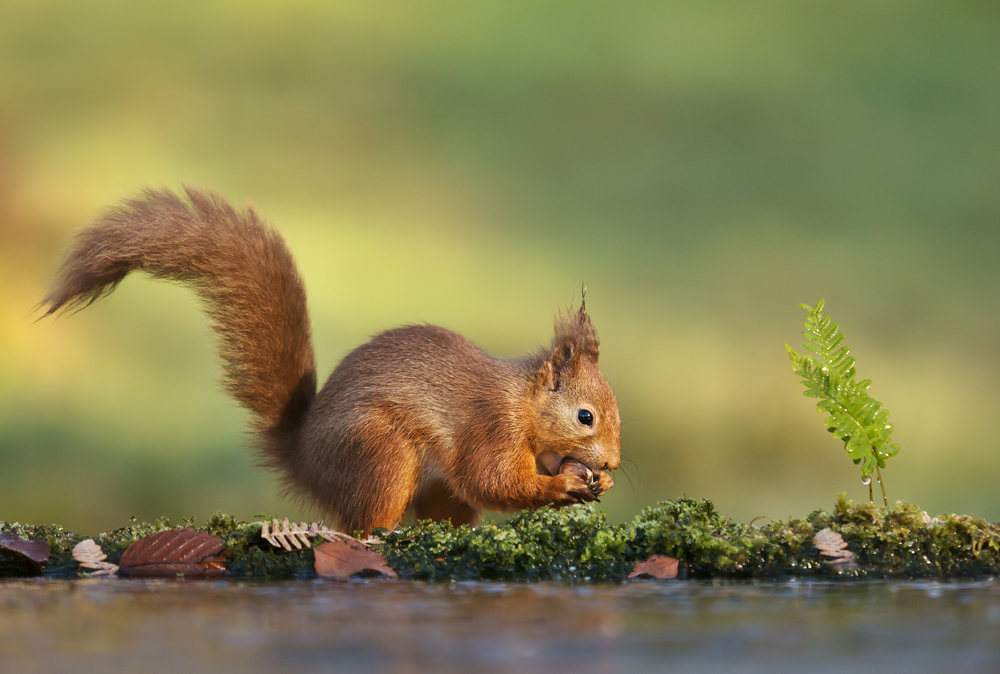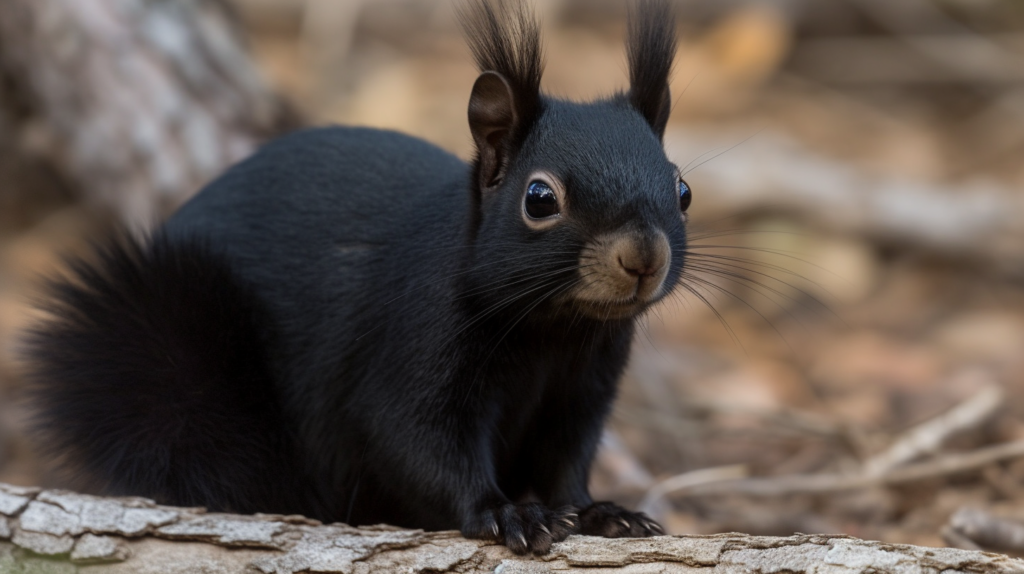Amid the diverse palette of the animal kingdom, squirrels maintain an endearing presence in parks and cities worldwide. These agile creatures, with their characteristic bushy tails and nimble acrobatics, add charm to any landscape. Among them, the black squirrel, a variant of the common grey squirrel, stands out due to its striking colouration. This unique creature, bathed in mystery and fascination, has sparked not only academic curiosity but also public interest. This has led to an influx of news direct from research centres, natural reserves, and public parks where these intriguing animals are spotted.
Not a Separate Species, but a Melanistic Variant
Contrary to common assumption, the black squirrel is not a distinct species. Instead, it is a melanistic subgroup of two closely related squirrel species: the Eastern gray squirrel (Sciurus carolinensis) and the fox squirrel (Sciurus niger). Melanism, a genetic condition that leads to the darkening of body tissue, is triggered by a defective pigment gene that results in an overproduction of melanin, the pigment responsible for the dark hue. This phenomenon, while prevalent across a wide array of animal species, presents a particularly riveting study subject when it comes to squirrels, given the unique gene variant responsible for their melanism.

Delving Deeper: The Genetics of Melanism in Squirrels
Melanism in squirrels is generally driven by a recessive defective pigment gene, meaning that the gene’s effects only manifest when a squirrel inherits the gene from both parents. However, the genetic script takes an interesting twist in the case of Eastern gray squirrels. Here, the gene responsible for melanism behaves in a semi-dominant manner, leading to the emergence of an intermediate phenotype when a squirrel inherits one normal pigment gene and one faulty gene. This results in a unique blend of grey and black hues in the Eastern gray squirrel population, presenting squirrels that are darker than the typical grey but not as dark as the fully melanistic, or black, morphs.
The Role of Geography and Climate: Selective Advantage of Black Squirrels
The geographical distribution of dark squirrels is far from uniform. Black squirrel populations are more commonly found in the northern regions, where the darker coat’s selective advantage becomes more pronounced. The prevailing theory suggests that in colder climates, the black variant’s darker coat absorbs and retains heat more efficiently, offering a survival advantage during harsh winters.
In the fascinating world of fox squirrels, melanism also exists, leading to the presence of darker-hued fox squirrels. However, these are notably less common than the black morphs of the Eastern gray squirrels, possibly due to inherent differences in geographical distribution, mating habits, and habitat preferences of these two species.
A Tale of Two Cousins: The Journey of the Grey Squirrel
The grey squirrel, a close counterpart of the black squirrel, has an intriguing backstory of its own. Grey squirrels are native to North America but were introduced to Britain during the 19th century. Once there, they significantly outcompeted the native Eurasian red squirrel (Sciurus vulgaris) due to several competitive advantages such as their larger size, higher birth rate, and resistance to squirrel pox, a lethal disease for red squirrels.

The Emergence and Expansion of Black Squirrels in the UK
The melanistic variant of the Eastern gray squirrel first marked its appearance in the UK around the 19th century. Since then, their population has been on a steady rise, with a substantial presence in certain areas, particularly the parks and cities of the southeast. The steady increase in the black squirrel population is often highlighted in various news outlets, arousing interest and curiosity among scientists, animal enthusiasts, and the general public alike.
The Mating Chases: A Grand Display of Nature’s Spectacle
One of the most enthralling aspects of studying black squirrels is the opportunity to observe their mating chases. During the mating season, a female squirrel, regardless of being black or grey, can attract multiple males, leading to high-speed, acrobatic chases through the dense canopy of trees. Interestingly, the females do not exhibit a colour preference during mate selection, making mating between grey and black variants a common sight.

Impact of Melanism on Squirrel Interactions and Survival
While there is no apparent colour preference during mating, melanism can significantly influence squirrel interactions in other ways. For instance, black squirrels, due to their striking colouration, might be more visible to predators during periods when the trees are not fully leafed. Conversely, the darker colouration may offer an advantage for squirrels inhabiting densely wooded areas, where the dark shades provide better camouflage, aiding in their survival.
Black Squirrels and Fox Squirrels: A Comparative Study
Fox squirrels, including their darker morphs, are typically larger than Eastern gray squirrels. Fox squirrels also exhibit different habitat preferences, often favouring areas with fewer trees and more open ground. This contrasts with the Eastern gray squirrels, both the common grey and black variants, which prefer heavily wooded areas. This divergence in habitat preference might contribute to the differences in the prevalence of melanism between these two closely related species.

The Threat of Urbanisation and the Future of Black Squirrel Populations
Looking ahead, the future of black squirrels remains a topic of ongoing research. While their population in certain areas is on the rise, the rapid pace of urban development and habitat loss poses a significant threat to all squirrel species, including the black squirrels. Therefore, conservation efforts are crucial to ensure their survival and to maintain the rich diversity of our parks and cities.
Conclusion and Future Directions
In conclusion, the black squirrel, with its unique colouration and intriguing genetics, offers a fascinating window into the study of animal melanism. As we continue to unravel this exciting animal mystery, it is vital to appreciate the role of these creatures in our ecosystems and to take necessary measures to protect and conserve them.
Despite being common squirrels, the black and grey variants play a significant role in enriching the biodiversity of our environment. Their presence in our parks and cities not only adds to the aesthetic appeal of these areas but also serves as a constant reminder of the intricate and beautiful complexity of nature. Their study continues to yield fascinating insights into genetics, species interaction, and the impacts of urban development on wildlife, making every bit of news about these creatures a cause for interest and celebration. As we move forward, it will be interesting to see how these populations evolve and adapt to the changing environment and what new lessons they will teach us about the fascinating world of animal genetics and ecology.

Ash is a contributing author who has been writing about wildlife for as long as he can remember. He has a vast knowledge of many different types of animals, from the tiniest shrews to the great whales that live in the deepest oceans.

We now have mixed black and grey squirrels in our garden where they have interbred.